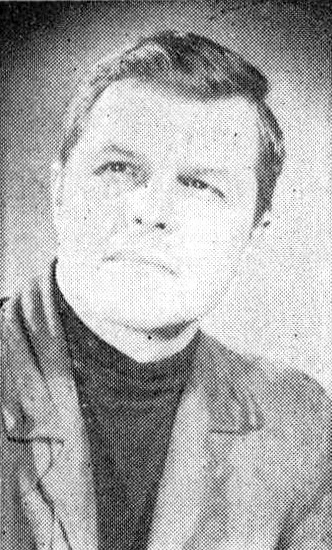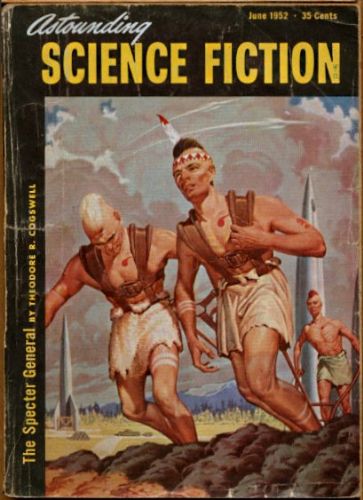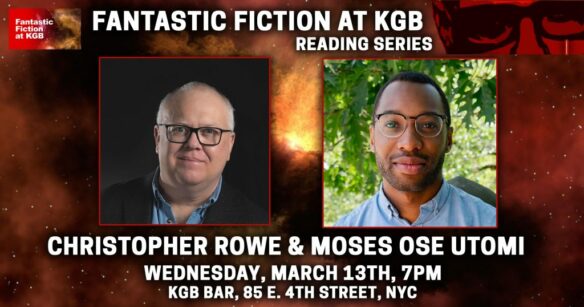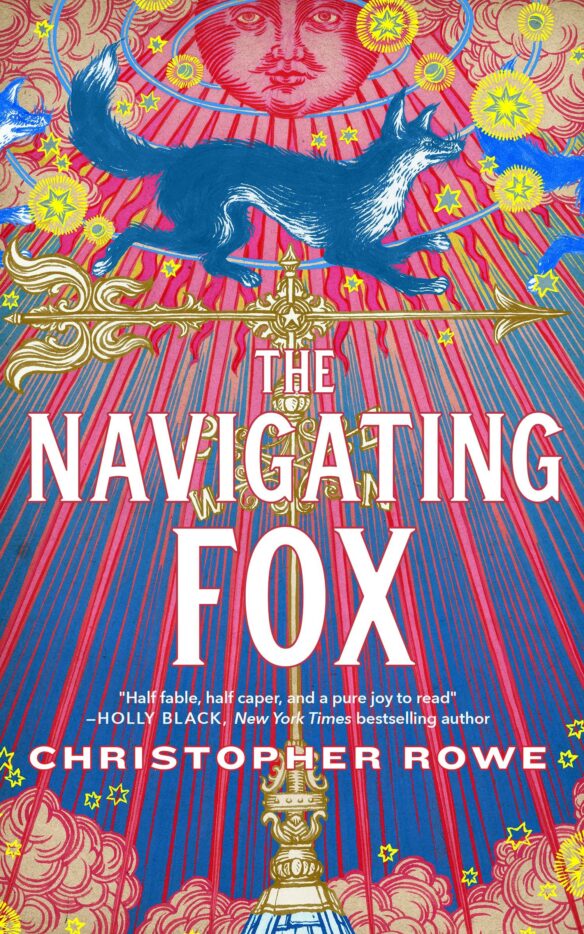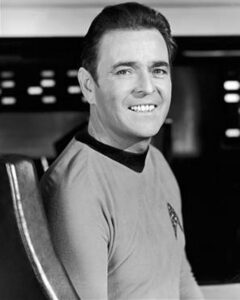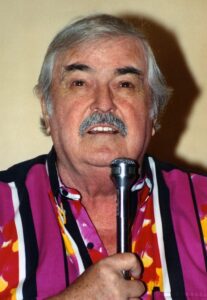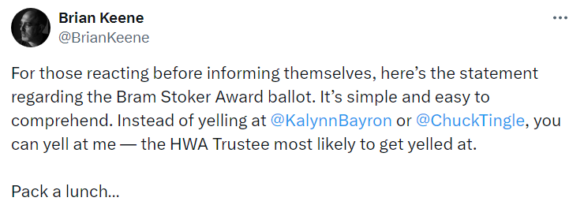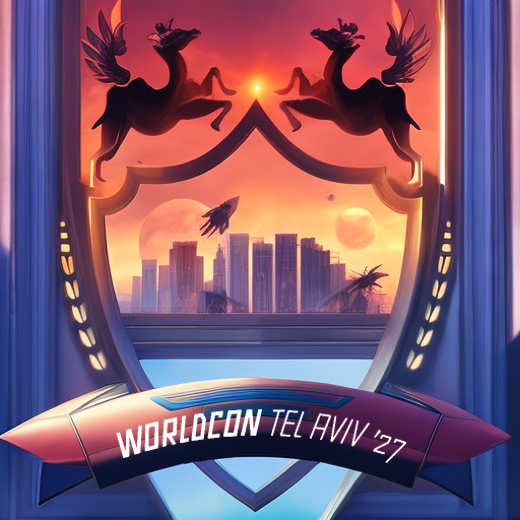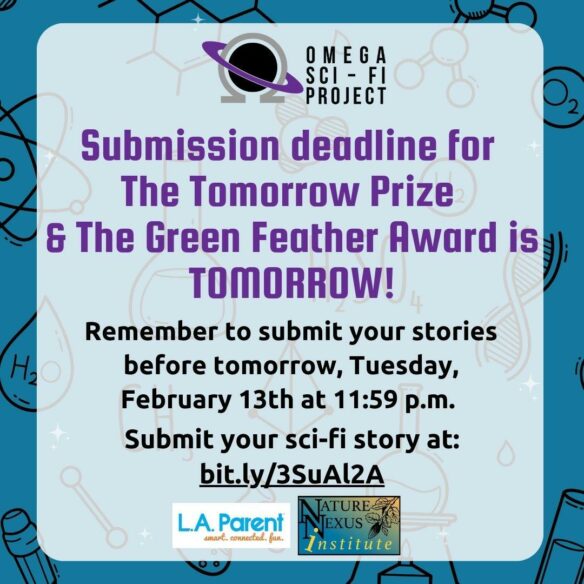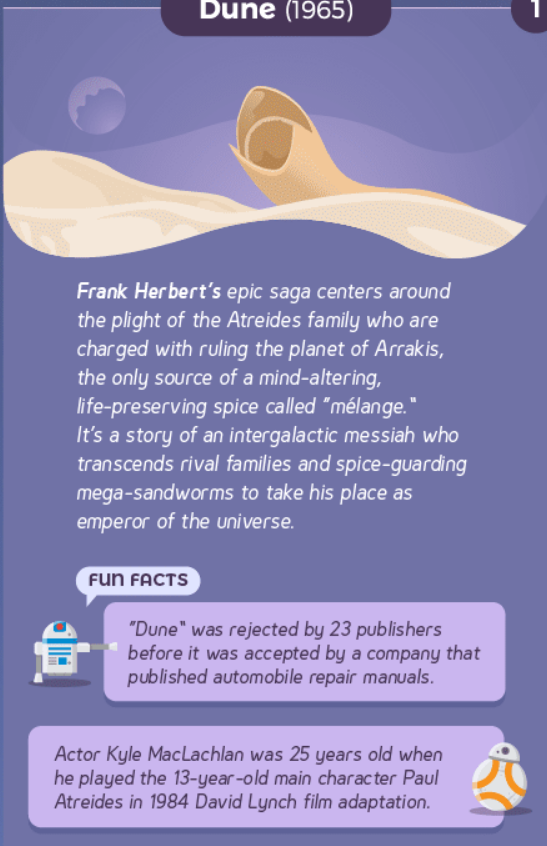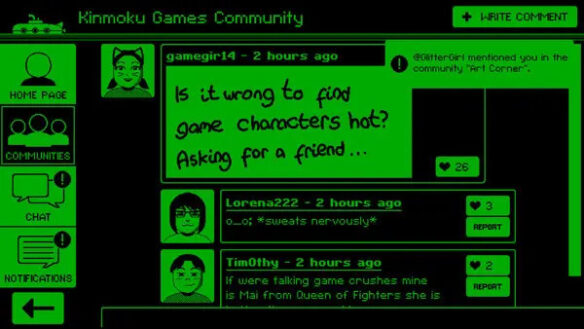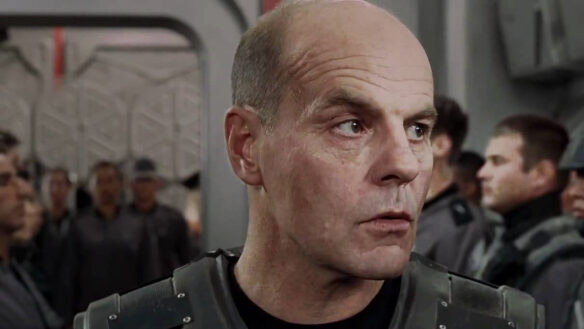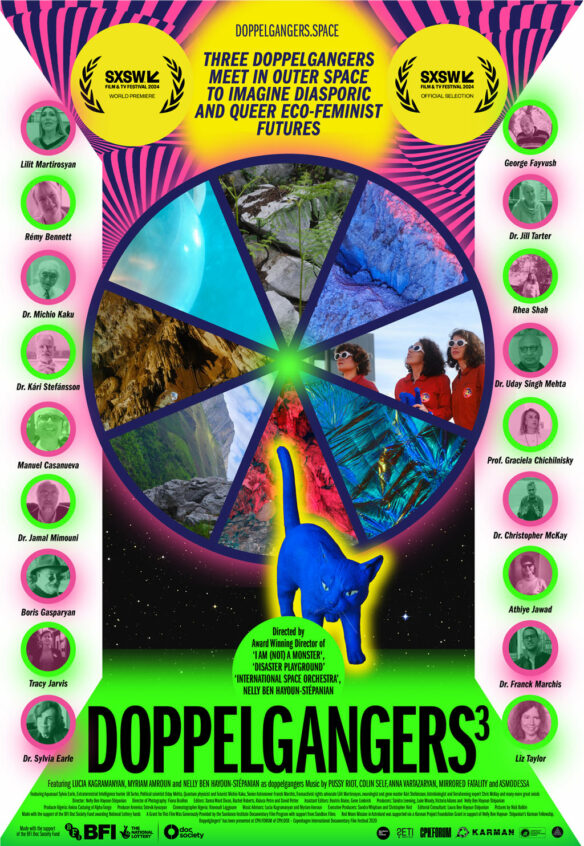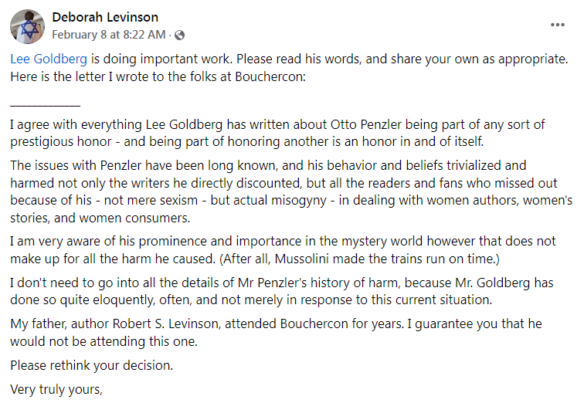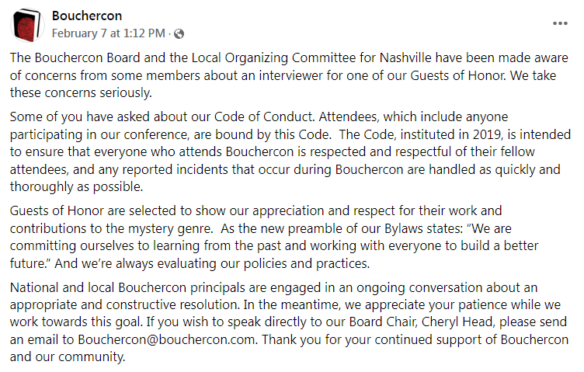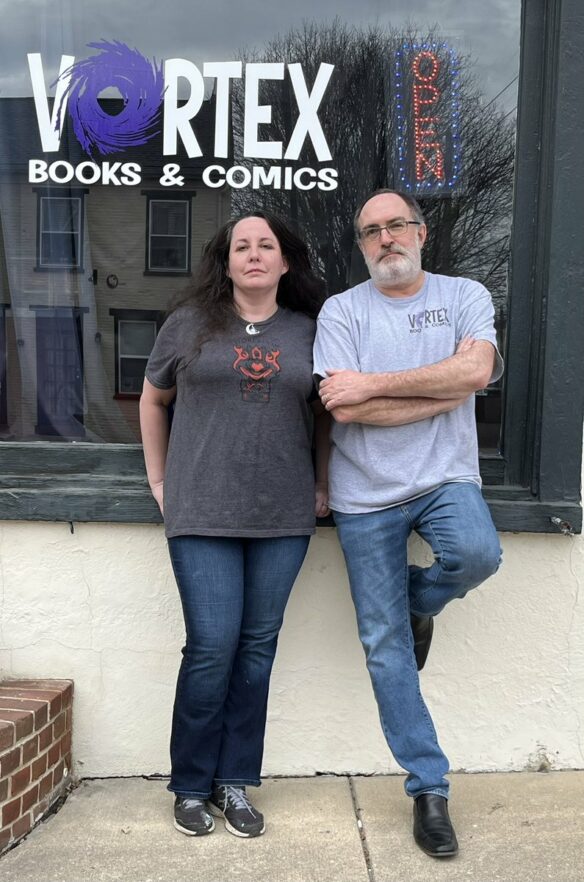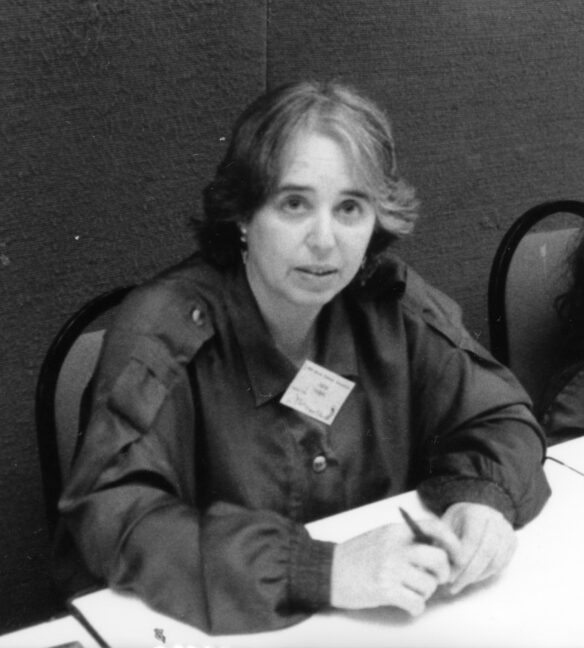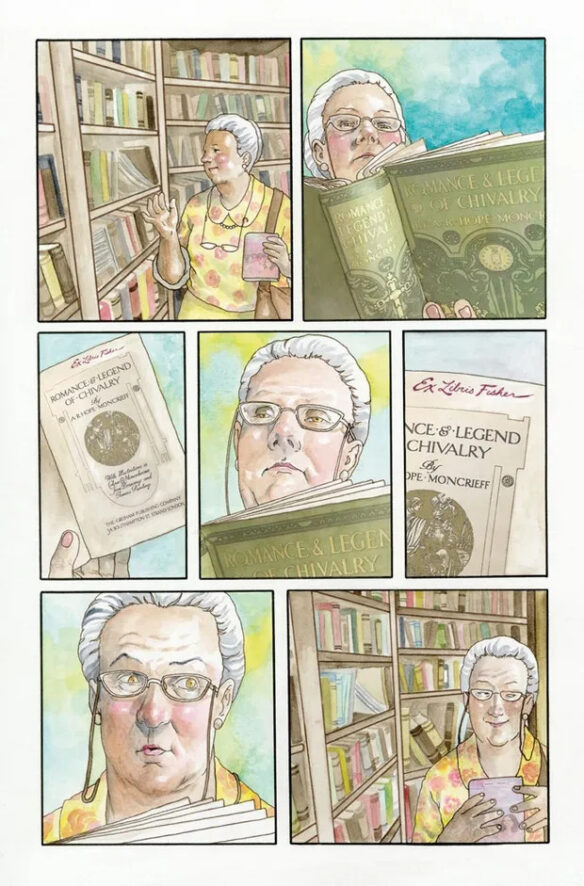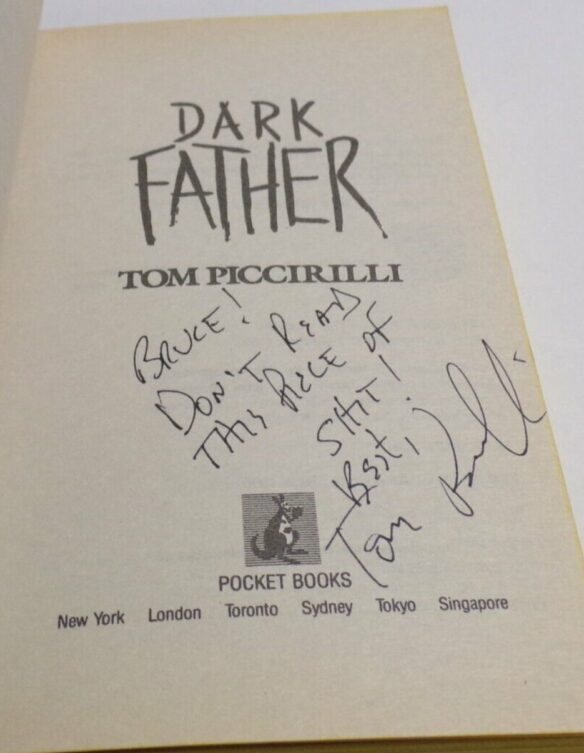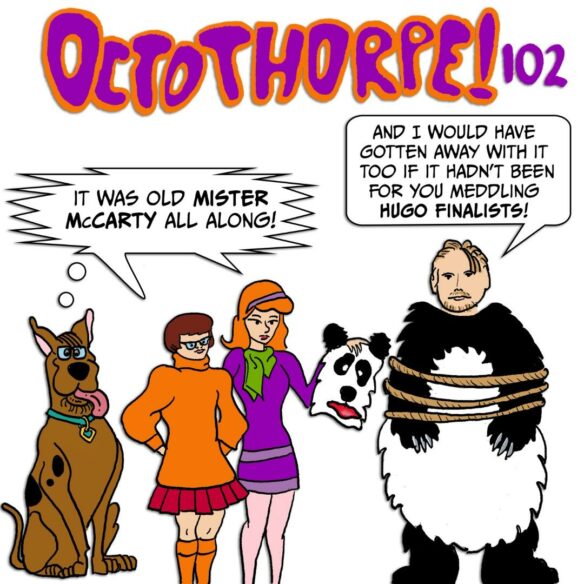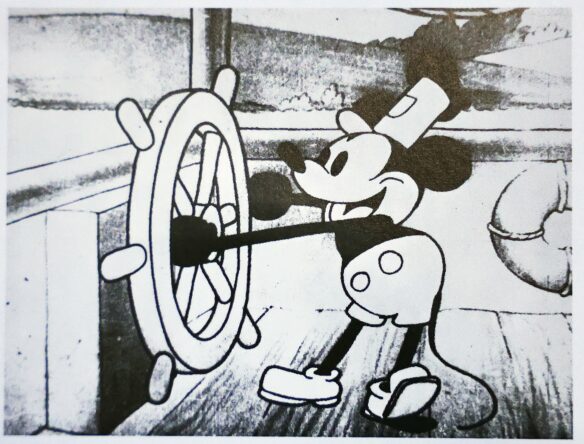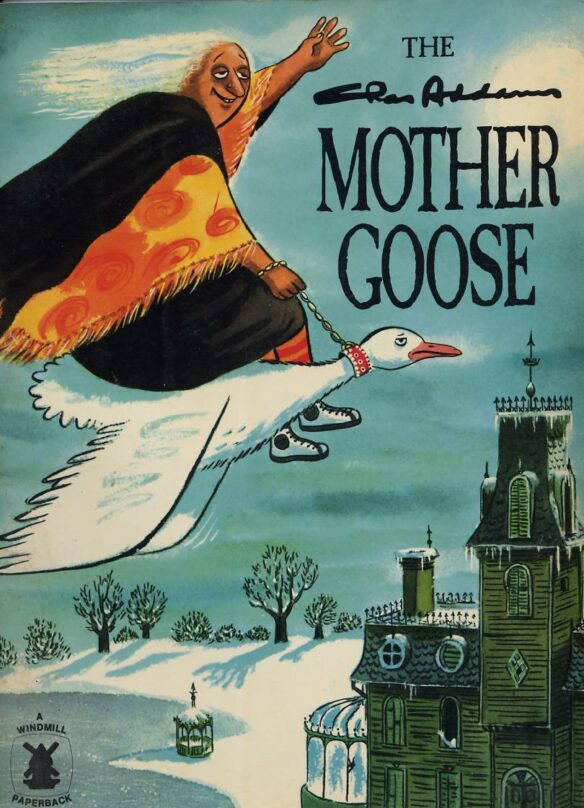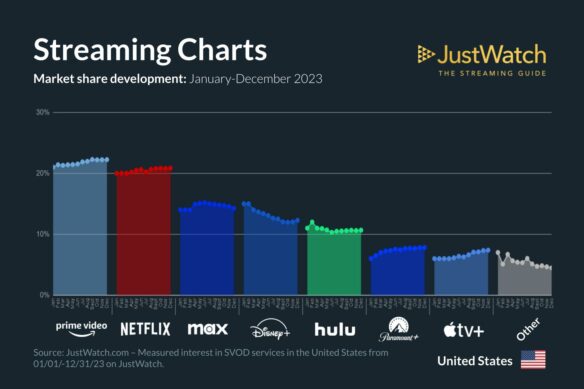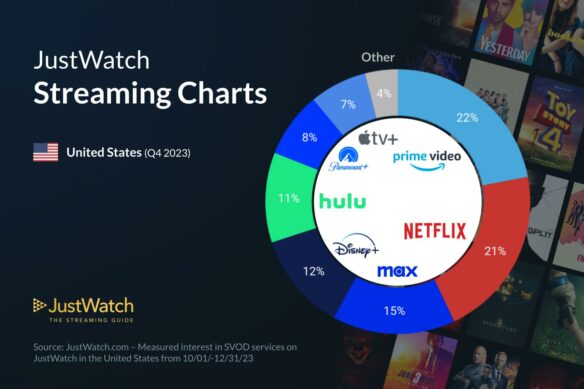(1) HOLLY BLACK Q&A. “Holly Black interview: The Cruel Prince author on the boom in faerie fantasy novels, BookTok, and sex scenes” at Slate.
What does it feel like now to be surrounded by all these other faerie fantasy books and, consequently, readers who potentially read only fantasy, who are not coming into the genre for the first time?
[Black] As a person who writes and reads a lot of fantasy, it’s been extremely gratifying to see fantasy move into a mainstream place. There are a lot of people who’ve grown up watching Lord of the Rings at a young enough age that it’s become part of their vocabulary of how the fantasy world works. Game of Thrones too. I think, for a lot of people, that barrier to entry is much lower than it was when there wasn’t so much exposure to fantasy.
I think the rise of romantasy is certainly in part because people do have the vocabulary of fantasy. Romance is one of the biggest genres in the world, so of course people want to see, or are able to read, fantasy romances in a way that might not have been true before. Romantasy is really two different genres kind of mushed together, probably in the same way that urban fantasy was. You have two streams: the romance-forward fantasy, where it’s really a romance novel with fantasy, and then you have fantasy that has romance. They’re paced really differently, and they have different focuses, but they live in the same genre. Then you had urban fantasy that came out of fantasy, and often those were the faerie books; for a long time urban fantasy was faerie, in the late ’80s.
(2) NEW WORLDS TURNING 60. Richard Glynn Jones told the New Worlds Facebook group on March 13 that an anniversary issue is in the works:
Michael Moorcock and some associates are preparing a new issue of New Worlds to commemorate the 60th anniversary of his becoming its editor. This will be in magazine format as before (A4, saddle-stitched) for publication in mid-summer. The contents are pretty much finalised, so please don’t send any unsolicited material: it’s by invitation only. A second book-format New Worlds is due from PS Publishing later in the year. More info soon.
(3) SOMETHING IS ROTTING IN HOLLYWOOD BITS. [Item by Mike Kennedy.] Digital is forever. Except when it isn’t. The movie industry has a data migration problem. From The Hollywood Reporter: “’It’s a Silent Fire’: Decaying Digital Movie and TV Show Files Are a Hollywood Crisis”.
Industry pros sweat the possibility that many digital files will eventually become unusable — an archival tragedy reminiscent of the celluloid era.
While David Zaslav and Bob Iger’s tax-optimization strategy of deleting films and TV shows from their streamers has triggered plenty of agita among creators, the custodians of Hollywood’s digital era have an even greater fear: wholesale decay of feature and episodic files. Behind closed doors and NDAs, the fragility of archives is a perpetual Topic A, with pros sweating the possibility that contemporary pop culture’s master files might be true goners, destined to the same fate as so many vanished silent movies, among them Alfred Hitchcock’s second feature, The Mountain Eagle, and Ernst Lubitsch’s Oscar-winning The Patriot.
It’s underscored by initiatives such as Martin Scorsese’s Film Foundation. “The preservation of every art form is fundamental,” the industry icon says on a video on the organization’s web site. For the business, these are valuable studio assets — to use one example, the MGM Library (roughly 4,000 film titles including the James Bond franchise and 17,000 series episodes) is worth an estimated $3.4 billion to Amazon — but there’s a misconception that digital files are safe forever. In fact, files end up corrupted, data is improperly transferred, hard drives fail, formats change, work simply vanishes. “It’s a silent fire,” says Linda Tadic, CEO of Digital Bedrock, an archiving servicer that works with studios and indie producers. “We find issues with every single show or film that we try to preserve.” So, what exactly has gone missing? “I could tell you stories — but I can’t, because of confidentiality.”
(4) FADING SCHOLARSHIP. [Item by SF Concatenation’s Jonathan Cowie.] The same fear holds true for scholarly publications. Nature this week has rung an alarm bell. SF fans should note: this is another reason why fandom’s move away from paper publications is to be deplored. Digital is simply not for evermore. We need plurality and a diversity of solutions…. “Millions of research papers at risk of disappearing from the Internet” at Nature.
An analysis of DOIs suggests that digital preservation is not keeping up with burgeoning scholarly knowledge.
DOIs for the uninitiated are Digital Object Identifiers: every academic publication should have one so that if a publisher’s website changes and there is a new web-page address (URL) the DOI remains the same and links through. [Jonathan adds, “Fans need not worry about this (the only one they should remember is https://doi.org/10.1017/cbo9781139087735…” Guess whose book that link goes to…]
More than one-quarter of scholarly articles are not being properly archived and preserved, a study of more than seven million digital publications suggests. The findings, published in the Journal of Librarianship and Scholarly Communication on 24 January1, indicate that systems to preserve papers online have failed to keep pace with the growth of research output.
“Our entire epistemology of science and research relies on the chain of footnotes,” explains author Martin Eve, a researcher in literature, technology and publishing at Birkbeck, University of London. “If you can’t verify what someone else has said at some other point, you’re just trusting to blind faith for artefacts that you can no longer read yourself.”
Primary research is here.
(5) LEGACY WORRIES. Brian Keene muses about the disturbingly short half-life of author name recognition in “Letters From the Labyrinth 372”.
…On Tuesday of this past week, I took a rare day off and drove up to Asbury Park, New Jersey to visit my pal F. Paul Wilson. It occurs to me that I will need to explain to some of my younger readers just who Paul is, and therein lies the meat of this missive. Paul was one of the first horror novelists I read. (As I’ve written in OTHER WORDS, my evolutionary chain as a kid was comic books and Hardy Boys, then Stephen King and F. Paul Wilson). First thing I read by him was The Keep — a seminal, classic horror novel which, sadly, most of you under the age of forty have probably never read. The Keep was the third “grown up book” I ever read (right after King’s Night Shift and Salem’s Lot), and it is an essential part of my writer DNA.
Paul went on to become a giant in the fields of not just horror, but science-fiction, fantasy, thrillers, and other genres, as well. He was a stalwart, perennial New York Times bestseller, and his best-known IP — Repairman Jack — will carry on long after he’s gone. I guarantee you that right now, many of you who did not recognize the name F. Paul Wilson are now nodding and saying, “Oh, yeah, I’ve heard of Repairman Jack.”
It feels absurd to have to explain all of this to you. How could anyone not know this? But then, I think about this past Thursday in the store, when I overheard a mother explaining to her daughter who Brian Keene was, and that he owned the store they were currently shopping in, and that she (the mother) had started reading him in high school. The girl, high school age herself, was holding a book by Wile E. Young that she’d pulled off the shelf. Wile E. Young, was reading me in high school and my books are an essential part of his writer DNA the way Paul’s are a part of mine….
(6) FEAR THE LEFTOVERS. “Godzilla Minus One Director Releases New Kaiju Short, ‘Foodlosslla’” – here is Comicbook.com’s introduction.
…Godzilla Minus One director Takashi Yamazaki teamed up with Ajinomoto (a line of cooking products in Japan) on a special new promo that takes the Kaiju director’s expertise and brings it to life in a new way. Highlighting the amount of food waste in Japan (2.44 million tons according to the advertisement), it results in the creation of “Foodlosslla” a kaiju made out of all the wasted food that doesn’t get eaten or cooked. But with the director’s eye, it’s a great looking monster for the promo. Check it out in action below…
(7) STILL PLENTY OF GOOD EATING ON THIS ONE. Don’t ask what internet rabbit hole this 2014 recipe came from: “Edible Art: Spice Stuffed Squash Sandworms” at Kitchen Overlord. (Click for larger image.)

(8) THOMAS STAFFFORD (1930-2024). [Item by Mike Kennedy.] Gemini 6. Gemini 9. Apollo 10. Apollo 10 Lunar Module. Apollo-Soyuz. Air Force Lt General. A long and busy life. RIP. “Astronaut Thomas Stafford, commander of Apollo 10, has died at age 93”. He died March 18. PBS News Hour pays tribute.
…Stafford, a retired Air Force three-star general, took part in four space missions. Before Apollo 10, he flew on two Gemini flights, including the first rendezvous of two U.S. capsules in orbit. He died in a hospital near his Space Coast Florida home, said Max Ary, director of the Stafford Air & Space Museum in Weatherford, Oklahoma.
Stafford was one of 24 people who flew to the moon, but he did not land on it. Only seven of them are still alive….
…After he put away his flight suit, Stafford was the go-to guy for NASA when it sought independent advice on everything from human Mars missions to safety issues to returning to flight after the 2003 space shuttle Columbia accident. He chaired an oversight group that looked into how to fix the then-flawed Hubble Space Telescope, earning a NASA public service award.
“Tom was involved in so many things that most people were not aware of, such as being known as the ‘Father of Stealth’,” Ary said in an email. Stafford was in charge of the famous “Area 51” desert base that was the site of many UFO theories, but the home of testing of Air Force stealth technologies….
… After the moon landings ended, NASA and the Soviet Union decided on a joint docking mission and Stafford, a one-star general at the time, was chosen to command the American side. It meant intensive language training, being followed by the KGB while in the Soviet Union, and lifelong friendships with cosmonauts. The two teams of space travelers even went to Disney World and rode Space Mountain together before going into orbit and joining ships.
“We have capture,” Stafford radioed in Russian as the Apollo and Soyuz spacecraft hooked up. His Russian counterpart, Alexei Leonov, responded in English: “Well done, Tom, it was a good show. I vote for you.”
The 1975 mission included two days during which the five men worked together on experiments….
(9) BELATED BIRTHDAY.
[Written by Cat Eldridge.]
Born March 17, 1948 — William Gibson, 76. Not at all surprisingly, the first series that I read by William Gibson was the one that started off with his first novel, Neuromancer, published forty years ago, which is called the Sprawl trilogy. I still love the now anachronistic wording of the opening, “THE SKY ABOVE the port was the color of television, tuned to a dead channel.”
I don’t know at all how many times that I’ve read that trilogy but the last time I did read it, about a decade, it was still impressively excellent.

Neuromancer would get a much deserved Hugo at Aussiecon Two as well as a Ditmar, Nebula and a Philip K. Dick; and Mono Lisa Overdrive won an Aurora. The novels had too many nominations to list here.
Yes, I’m looking forward to the Apple financed Neuromancer series. If anyone can financially afford to do it right, it’s them. And they have a strict hands-off policy of not interfering with the actual production team.
Going back in time I must talk about “Johnny Mnemonic” which was not his first story, which was “Hinterlands“ which I’ve never of until now. “Johnny Mnemonic” I think is one of the finest SF short story written. The same holds true for “The Gernsback Continuum” which was published in the same year, forty-two years ago. I’ll toss in “New Rose Hotel” which showed up a few years later.
Please let’s not talk about the Johnny Mnemonic film. Really don’t mention it. I get queasy thinking about how they butchered that stellar story. And I’ve seen some pretty awful scripts but few that matched this, plus the casting of him. Why oh why?
His second series, the Bridge trilogy, which is Virtual Light, Idoru and All Tomorrow’s Parties came out some thirty years ago. No, I’ve not read it nearly as many times as I’ve read the Sprawl ones but I did find rather excellent. The near future setting is more grounded and a more fascinating read for that.
Ok, I’ll admit that I do not at all know what to make of Pattern Recognition, Spook Country and Zero History. They are well written like everything he does, and the characters are fascinating, but something these works is just not quite right for me. It comes off cold, distanced and just not interesting as what else he’s done.
On the other catspaw, the Jackpot trilogy, or possibly longer series, which so far consisted of The Peripheral that has contain time travel (of sorts, maybe) and Agency, and a third, Jackpot, which I don’t think has a release date, is fascinating in the first two novels. Strange, disjointed but fascinating.
(10) COMICS SECTION.
- Thatababy is really for the birds.
- Breaking Cat News reports on a comics industry story.
- Peanuts from 1955 explains why we’ll never land a rocket on the moon.
(11) JUNE 4. ScreenRant says The Acolyte release date has been confirmed by Lucasfilm: “We Finally Know When The Next Star Wars TV Show Comes Out”.
… With a summer 2024 Disney+ drop having long been rumored, Lucasfilm has officially confirmed The Acolyte‘s release date as June 4, 2024, via Star Wars‘ official Twitter/X account. As it turns out, the release dates that have been reported for The Acolyte were accurate. This means Star Wars fans will not have to wait long to sink their teeth into the High Republic era, as Lucasfilm takes a big step into a new facet of a galaxy far, far away….
… The books of the High Republic are set centuries before Star Wars: Episode I – The Phantom Menace. Upon The Acolyte‘s announcement, it was confirmed that the Disney+ show would detail the waning days of the High Republic era. This places the show about 100 years before The Phantom Menace in the Star Wars timeline, promising a new, exciting look at an entirely new era of the franchise….
(12) DO ANDROIDS DREAM OF LOOKING UP AT GIANT ELECTRIC SHEEP? YES THEY CAN! [Item by Daniel Dern.] “Montana Man Pleads Guilty to Federal Wildlife Trafficking Charges as Part of Yearslong Effort to Create Giant Hybrid Sheep for Captive Hunting” at the US Department of Justice.
Defendant Worked to Traffic Marco Polo Sheep Parts from Kyrgyzstan, Clone Sheep, Illegally Inseminate Ewes to Create Hybrids and Traffic Rocky Mountain Bighorn Sheep Parts
A Montana man pleaded guilty today to two felony wildlife crimes – a conspiracy to violate the Lacey Act and substantively violating the Lacey Act – as part of an almost decade-long effort to create giant sheep hybrids in the United States with an aim to sell the species to captive hunting facilities.
Arthur “Jack” Schubarth, 80, of Vaughn, Montana, is the owner and operator of Sun River Enterprises LLC – also known as Schubarth Ranch – which is a 215-acre alternative livestock ranch in Vaughn. The Schubarth Ranch is engaged in the purchase, sale and breeding of “alternative livestock” such as mountain sheep, mountain goats and various ungulates. The primary market for Schubarth’s livestock is captive hunting operations, also known as shooting preserves or game ranches.
According to court documents, Schubarth conspired with at least five other individuals between 2013 and 2021 to create a larger hybrid species of sheep that would garner higher prices from shooting preserves. Schubarth brought parts of the largest sheep in the world, Marco Polo argali sheep (Ovis ammon polii), from Kyrgyzstan into the United States without declaring the importation. Average males can weigh more than 300 pounds with horns that span more than five feet. Marco Polo argali are native to the high elevations of the Pamir region of Central Asia. They are protected internationally by the Convention on International Trade in Endangered Species, domestically by the U.S. Endangered Species Act and are prohibited in the State of Montana to protect native sheep from disease and hybridization.
Schubarth sent genetic material from the argali parts to a lab to create cloned embryos. Schubarth then implanted the embryos in ewes on his ranch, resulting in a single, pure genetic male Marco Polo argali that he named “Montana Mountain King” or MMK….
(13) TINY MESSAGES. Like the “golden record” sent with two 1977 Voyager probes,“NASA’s Europa Clipper mission will carry a poem and millions of names to ocean moon” reports CNN.
When NASA’s Europa Clipper aims to launch on its highly anticipated mission to an icy moon in October, the spacecraft will carry a unique design etched with names, poetry and artwork symbolizing humanity.
The US space agency has a long history of sending names and meaningful designs aloft aboard missions, including the Voyager probes, the Perseverance rover and Parker Solar Probe. Now, it’s Europa Clipper’s turn to carry on the tradition of ferrying a design that illustrates why humans are driven to explore the cosmos….
… Decorated on both sides and made of the rare metal tantalum, the triangular plate will seal the spacecraft’s sensitive electronics inside a vault to protect them from Jupiter’s harsh radiation.
On the inside of the vault is a silicon microchip stenciled with more than 2.6 million names submitted by the public. The microchip is at the center of a design that shows a bottle floating within the orbit of Jupiter and its moons to symbolize that it serves as a cosmic message in a bottle.
Technicians at NASA’s Jet Propulsion Laboratory in Pasadena, California, used electron beams to stencil the names at a size smaller than one-thousandth the width of a human hair.
Below the bottle, the design features the original poem “In Praise of Mystery: A Poem for Europa” by US Poet Laureate Ada Limón, etched in her handwriting, as well as a portrait of the late planetary sciences pioneer Ron Greeley, an Arizona State University professor who played a crucial role in laying the foundation for the development of a mission to Europa.
The side of the plate facing the inside of the vault also includes an etching of the Drake Equation, developed by the late astronomer Frank Drake of the University of California Santa Cruz in 1961 to estimate the possibility of finding advanced life beyond Earth. The equation remains an important part of astrobiological research as scientists search for evidence of life beyond our planet.
The external side of the plate carries waveforms, or visual representations of sound waves, that depict the word “water” in 103 languages from around the world. At the heart of the spiral is a symbol that means “water” in American Sign Language. The audio of the spoken languages collected by linguists for NASA is available on its website….
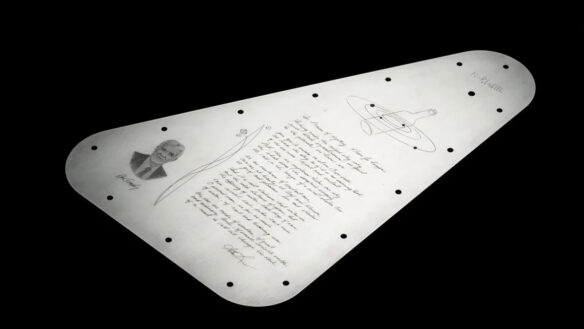
(14) VIDEO OF THE DAY. Mother’s Basement looks back on “How Akira Toriyama Changed The World”.
Akira Toriyama didn’t just change manga and anime forever, he changed the entire world. Here’s how.
Geoff Thew creates videos analyzing the storytelling techniques of anime and video games. He has been named the number one Worst YouTube Anime Reviewer by The Top Tens.
[Thanks to SF Concatenation’s Jonathan Cowie, Steven French, Mike Kennedy, Kathy Sullivan, Daniel Dern, JJ, Lise Andreasen, Andrew (not Werdna), N., Andrew Porter, John King Tarpinian, Chris Barkley, and Cat Eldridge for some of these stories. Title credit belongs to File 770 contributing editor of the day Daniel Dern.]


